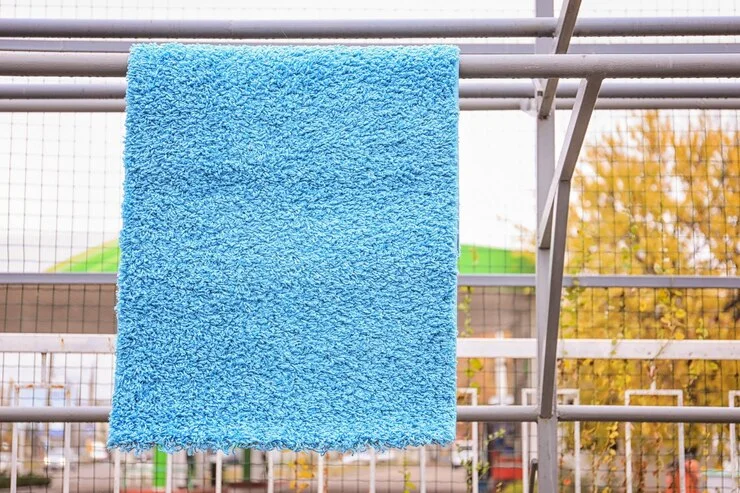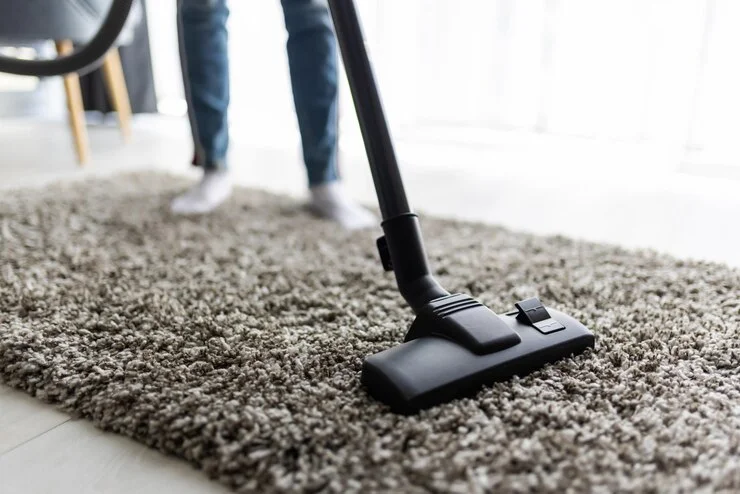Keeping your rugs clean is essential for maintaining a healthy and pleasant living environment. Pressure washing is one of the most effective ways to deep clean rugs, but the real challenge comes after, drying the rug properly. Improper drying can lead to unpleasant odors, mold growth, or damage to the rug fibers. This guide covers the best methods for how to dry a rug after pressure washing. It includes detailed steps and tips to keep rugs in pristine condition.
Why Proper Rug Drying is Important?
Before diving into the drying techniques, it’s crucial to understand why proper drying is essential:
- Prevents Mold and Mildew: Excess moisture in rugs can cause mold and mildew. This damages the rug and poses health risks.
- Maintains Rug Quality: Wet rugs can weaken fibers and cause discoloration. They may also develop unpleasant smells, ruining their look and usability.
- Extends Rug Lifespan: Thorough drying prevents damage and keeps your rug in good condition. It also saves money on replacements.
Step 1: Prepare for Drying After Pressure Washing
After pressure washing your rug, take these steps to prepare for efficient drying.
- Squeeze Out Excess Water: Use a squeegee, towel, or your hands to gently press out as much water as possible. Work from the center outward to push water toward the edges. Be careful not to damage the rug fibers by applying too much pressure.
- Shake the Rug: After squeezing out the water, shake the rug firmly. This removes extra droplets and loosened dirt. This helps reduce the overall drying time.
- Place on a Flat Surface: Lay the rug on a flat, clean surface. Use a concrete patio or plastic sheet to allow water to drain. Avoid uneven or dirty surfaces that could imprint or soil the rug.
Step 2: Use Natural Air Drying Techniques
Natural air drying is one of the safest and most effective methods for drying a rug. Follow these steps for optimal results:
Find a Well-Ventilated Area
Choose a location with good air circulation. Options include a patio, balcony, backyard, or open garage. Ensure the area is shaded. Direct sunlight can fade colors and weaken fibers over time.
Elevate the Rug
Place the rug over a drying rack, fence, or two chairs to allow air to circulate underneath. Elevating the rug ensures even drying. It prevents moisture from trapping underneath, which can cause mold growth.
Use Fans
Position one or more fans around the rug to enhance air circulation. Set the fans to a medium or high speed and ensure they blow air across both the top and bottom of the rug. Fans can significantly reduce drying time, especially in humid climates.
Step 3: Speed Up Drying with Modern Tools
If you’re short on time or the weather isn’t favorable, modern tools can help hurry the drying process:
Dehumidifier
A dehumidifier is a fantastic tool for removing moisture from the air. Place the rug in a small, enclosed space with the dehumidifier running. This creates a dry environment, speeding up the drying process. It also prevents mold and mildew.
Wet/Dry Vacuum
A wet/dry vacuum is an excellent tool for extracting excess water from the rug. Run the vacuum over the surface methodically, ensuring you cover all areas evenly. For best results, use the vacuum with other drying methods, like fans or a dehumidifier.
Hair Dryer
For smaller rugs or targeted drying, a hair dryer set to low or medium heat can be effective. Hold the dryer a few inches away from the surface. Keep it moving to avoid overheating or damaging the fibers. This method works best for minor damp spots rather than full rugs.
Step 4: Monitor and Rotate the Rug
To ensure thorough drying, check the rug’s progress and rotate it periodically:
- Check for Damp Spots: Every few hours, run your hands over the rug to identify any areas that remain damp.
- Flip the Rug: If the top feels dry but the underside is damp, flip the rug. This allows the bottom to dry completely. This step is essential for thicker rugs with dense fibers.

Step 5: Prevent Odors During the Drying Process
Even with proper drying techniques, there’s always a risk of odors developing. Here’s how to keep your rug smelling fresh:
- Sprinkle Baking Soda: Sprinkle baking soda lightly over the rug. It absorbs moisture and neutralizes odors. Wait for a few hours before vacuuming it.
- Use Essential Oils: Add a few drops of your favorite essential oil (like lavender or eucalyptus) to a spray bottle with water. Lightly mist the rug. This will leave a pleasant scent while helping to combat musty odors.
Step 6: Test for Complete Dryness
Before placing your rug back in its original location, ensure it is completely dry to avoid any hidden moisture issues. Here’s how to test:
- Feel the Rug: Run your hand over the entire surface to check for any dampness. Pay extra attention to thicker areas or patterns.
- Check the Underside: Lift the rug and feel the underside to ensure it is completely dry.
- Smell Test: A dry rug should not emit any musty or damp odors. If it does, continue drying for a few more hours and repeat the steps above.
Step 7: How to Dry a Rug After Cleaning in Winter?
Drying rugs in winter is challenging. Lower temperatures and higher humidity levels make it harder. Here are some tips to ensure efficient drying during the colder months:
- Indoor Drying with Proper Ventilation: Since outdoor drying may not be an option, place the rug in a well-ventilated indoor space. Use fans to circulate the air and prevent moisture buildup.
- Use a Dehumidifier: A dehumidifier is effective in winter. It reduces indoor humidity and speeds up drying.
- Use Heating Systems: Keep the room warm by using central heating or portable heaters. But, avoid placing the rug too close to the heat source to prevent damage.
- Lay the Rug on a Rack: Elevate the rug on a drying rack to allow air circulation on both sides. This prevents the underside from staying damp for too long.
- Check for Dryness Regularly: Winter drying may take longer, so inspect the rug frequently to ensure no damp spots remain.
Common Mistakes to Avoid
Drying a rug might seem straightforward, but there are a few common mistakes to avoid:
- Skipping the Squeeze Step: Not removing excess water right after washing delays drying. It also increases the risk of mold.
- Leaving in Direct Sunlight: Sunlight helps dry the rug, but too much exposure can cause fading and damage delicate fibers.
- Ignoring the Underside: Focusing only on the top side can leave moisture trapped underneath, leading to mold and mildew growth.
- Using Excessive Heat: Avoid using high heat from tools like hair dryers or heaters, as this can damage the rug’s fibers and backing.
How much time does it take to dry a rug?
The drying time for a rug depends on several factors, such as its size, thickness, and the drying conditions. On average:
- Thin Rugs: May dry within 4-6 hours.
- Thick or Plush Rugs: Can take up to 24-48 hours to dry completely.
Using tools like fans, dehumidifiers, and wet/dry vacuums can reduce these times significantly, especially in humid or rainy climates.
Conclusion
Properly drying a rug after pressure washing is key to maintaining its quality, appearance, and longevity. Learn how to dry a rug after pressure washing by following the steps in this guide to ensure efficient and safe drying. From natural air drying to modern tools, each method has unique advantages for different needs. With patience and the right techniques, your rug will be fresh, clean, and ready to enhance your living space again!
